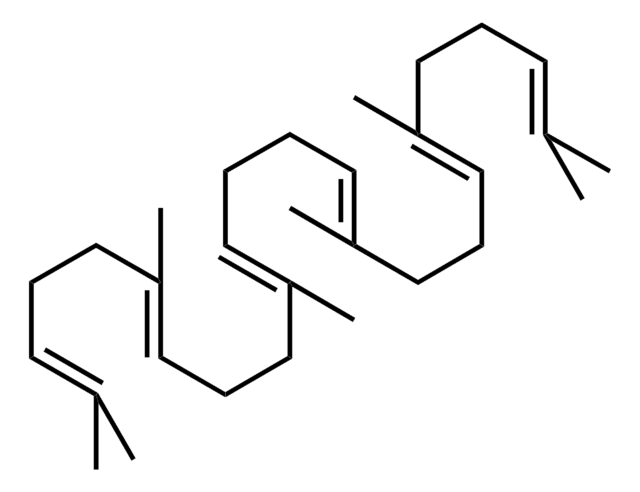80165
Phytane
analytical standard
Sinonimo/i:
2,6,10,14-Tetramethylhexadecane
About This Item
Prodotti consigliati
Grado
analytical standard
Livello qualitativo
Saggio
≥95.0% (GC)
Durata
limited shelf life, expiry date on the label
tecniche
HPLC: suitable
gas chromatography (GC): suitable
P. ebollizione
69-71 °C/0.001 mmHg (lit.)
Densità
0.791 g/mL at 20 °C (lit.)
applicazioni
environmental
food and beverages
Formato
neat
Stringa SMILE
CCC(C)CCCC(C)CCCC(C)CCCC(C)C
InChI
1S/C20H42/c1-7-18(4)12-9-14-20(6)16-10-15-19(5)13-8-11-17(2)3/h17-20H,7-16H2,1-6H3
GGYKPYDKXLHNTI-UHFFFAOYSA-N
Applicazioni
Confezionamento
Codice della classe di stoccaggio
10 - Combustible liquids
Classe di pericolosità dell'acqua (WGK)
WGK 3
Punto d’infiammabilità (°F)
Not applicable
Punto d’infiammabilità (°C)
Not applicable
Dispositivi di protezione individuale
Eyeshields, Gloves
Scegli una delle versioni più recenti:
Possiedi già questo prodotto?
I documenti relativi ai prodotti acquistati recentemente sono disponibili nell’Archivio dei documenti.
Il team dei nostri ricercatori vanta grande esperienza in tutte le aree della ricerca quali Life Science, scienza dei materiali, sintesi chimica, cromatografia, discipline analitiche, ecc..
Contatta l'Assistenza Tecnica.






![Benzo[ghi]perylene analytical standard](/deepweb/assets/sigmaaldrich/product/structures/154/740/c50ff1be-dfb4-4159-a98c-9cecf9206ad3/640/c50ff1be-dfb4-4159-a98c-9cecf9206ad3.png)
